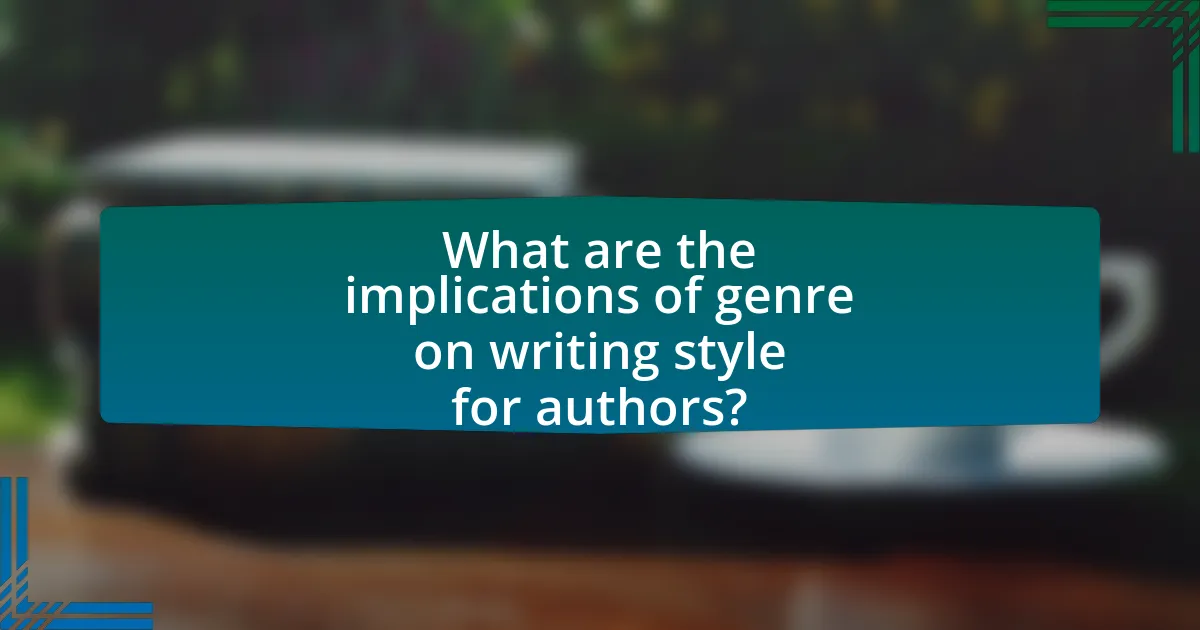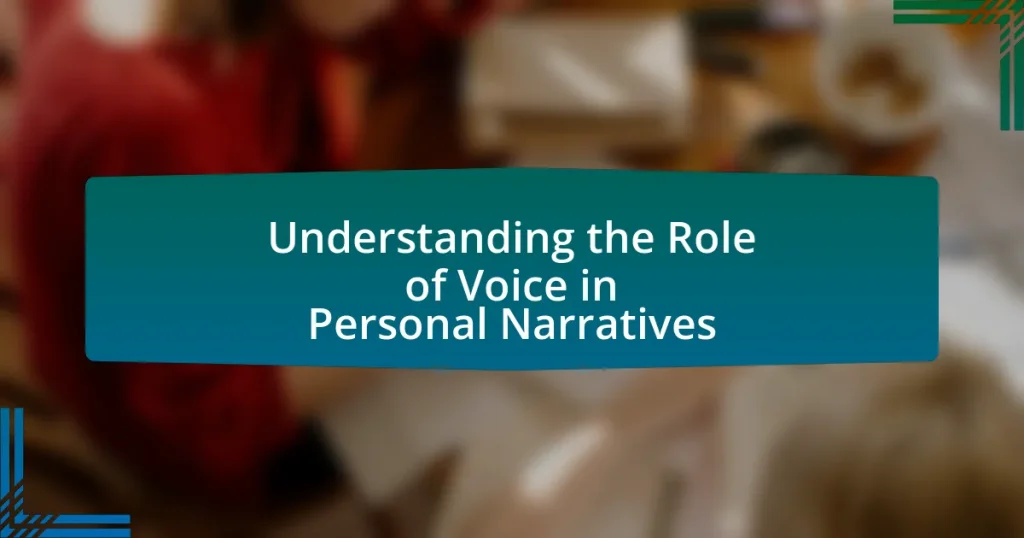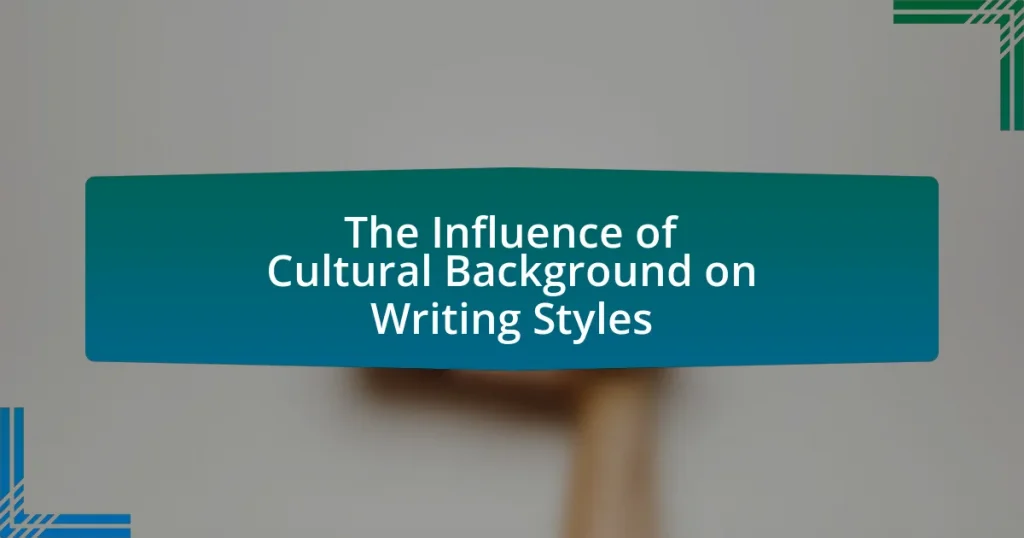The article examines the significant relationship between genre and writing style choices, highlighting how genre influences tone, narrative structure, and language use. It discusses the expectations associated with various genres, such as fiction, non-fiction, poetry, and drama, and how these expectations shape authors’ stylistic decisions. Key topics include the impact of genre on character development, vocabulary choices, and the challenges authors face when writing across genres. Additionally, the article provides insights into best practices for writers to effectively analyze genre conventions and adapt their writing style while maintaining their unique voice.

What is the relationship between genre and writing style choices?
The relationship between genre and writing style choices is that genre significantly influences the conventions and techniques authors employ in their writing. Different genres, such as fiction, non-fiction, poetry, and drama, come with established norms that dictate tone, structure, and language use. For instance, a mystery novel typically utilizes suspenseful language and a fragmented narrative to engage readers, while academic writing prioritizes clarity and formal tone to convey information effectively. This alignment between genre and style is supported by literary theory, which posits that genre shapes reader expectations and authorial intent, guiding stylistic decisions to meet those expectations.
How does genre influence the tone of a piece?
Genre significantly influences the tone of a piece by establishing the expectations and emotional resonance associated with that genre. For instance, a horror genre typically employs a dark, suspenseful tone to evoke fear, while a romantic genre often utilizes a warm, affectionate tone to create intimacy. This tonal differentiation is rooted in the conventions and characteristics that define each genre, guiding the author’s stylistic choices and the reader’s emotional response. Research indicates that readers interpret tone through genre cues, which shape their engagement and understanding of the narrative (Miall, 2006, “Emotion in Narrative”). Thus, the genre not only dictates the thematic elements but also fundamentally shapes the tone, aligning it with the audience’s anticipations.
What are the different tones associated with various genres?
Different genres are associated with distinct tones that shape the reader’s experience. For instance, in fiction, tones can range from whimsical in fantasy to somber in literary fiction, influencing emotional engagement. In contrast, non-fiction often adopts a more informative and objective tone, as seen in academic writing, which prioritizes clarity and precision. Additionally, genres like horror utilize a suspenseful and foreboding tone to evoke fear, while romance typically employs a warm and passionate tone to foster connection. These tonal variations are essential in conveying the intended message and emotional resonance of each genre.
How does tone affect reader perception in different genres?
Tone significantly influences reader perception across different genres by shaping emotional responses and guiding interpretation. In literary fiction, a somber tone can evoke empathy and introspection, while a light-hearted tone in comedy invites amusement and relaxation. For instance, in horror, a suspenseful tone heightens tension and fear, compelling readers to engage more deeply with the narrative. Research indicates that tone can alter the perceived credibility of a text; a formal tone in academic writing enhances authority, while an informal tone in personal essays fosters relatability. Thus, the tone not only reflects the genre but also actively shapes how readers connect with and understand the content.
What role does genre play in determining narrative structure?
Genre plays a crucial role in determining narrative structure by establishing conventions and expectations that guide the organization and progression of a story. Different genres, such as mystery, romance, or science fiction, dictate specific narrative elements like plot development, character arcs, and pacing. For instance, a mystery genre typically follows a structure that includes clues, red herrings, and a resolution, while a romance genre often emphasizes character relationships and emotional development. These structural elements are not arbitrary; they are shaped by audience expectations and historical context, as seen in the evolution of genres over time. Thus, genre significantly influences how narratives are constructed and perceived, aligning storytelling techniques with the anticipated experiences of the audience.
What are the common narrative structures found in specific genres?
Common narrative structures found in specific genres include the three-act structure in drama, the hero’s journey in fantasy, and the nonlinear narrative in mystery. The three-act structure divides a story into setup, confrontation, and resolution, which is prevalent in plays and screenwriting. The hero’s journey, characterized by stages such as the call to adventure and the return, is a framework often used in fantasy and adventure genres, as outlined by Joseph Campbell in “The Hero with a Thousand Faces.” Nonlinear narratives, which present events out of chronological order, are frequently employed in mystery and thriller genres to create suspense and intrigue, as seen in works like “Gone Girl” by Gillian Flynn. These structures help shape the reader’s experience and expectations based on genre conventions.
How does narrative structure impact character development in different genres?
Narrative structure significantly impacts character development across different genres by dictating how characters are introduced, evolve, and interact within the story. In linear narratives, such as traditional novels, characters often undergo gradual development, allowing for deep exploration of their motivations and transformations over time. Conversely, in non-linear narratives, common in genres like science fiction or experimental literature, character development may be fragmented, leading to a more complex understanding of characters as their backstories and futures are revealed out of chronological order.
For instance, in mystery genres, the narrative structure often withholds information, shaping character development through suspense and revelation, which can create a more dynamic and engaging portrayal of characters. In contrast, romance genres typically utilize a more straightforward narrative structure that emphasizes emotional arcs and relationship dynamics, allowing for clear character growth. Studies, such as those by M. J. McGann in “Narrative Structure and Character Development” published in the Journal of Literary Studies, demonstrate that the interplay between narrative structure and character arcs is crucial in shaping reader perceptions and emotional connections to characters.
How does genre affect language and vocabulary choices?
Genre significantly influences language and vocabulary choices by dictating the stylistic conventions and lexical selections appropriate for specific contexts. For instance, academic writing typically employs formal language, technical jargon, and precise terminology to convey complex ideas, while creative writing often favors figurative language, emotional expression, and varied sentence structures to engage readers. Research by Biber (1988) in “Variation Across Speech and Writing” demonstrates that different genres exhibit distinct linguistic features, such as the frequency of certain grammatical structures and vocabulary types, which further supports the assertion that genre shapes language use.
What types of language are typical for various genres?
Different genres utilize distinct types of language to convey their themes and engage their audiences effectively. For instance, literary fiction often employs rich, descriptive language and complex sentence structures to explore character development and emotional depth. In contrast, genre fiction, such as mystery or romance, typically favors straightforward, accessible language that prioritizes plot progression and reader engagement. Academic writing utilizes formal language, precise terminology, and structured arguments to convey information and analysis clearly. Additionally, poetry often employs figurative language, rhythm, and meter to evoke emotions and create imagery. These variations in language reflect the conventions and expectations of each genre, influencing how readers interpret and connect with the text.
How does vocabulary choice influence the reader’s experience?
Vocabulary choice significantly influences the reader’s experience by shaping their understanding and emotional response to the text. Specific word selections can evoke particular feelings, create vivid imagery, or establish a tone that aligns with the genre, thereby enhancing engagement. For instance, in literary fiction, the use of descriptive and nuanced vocabulary can immerse readers in the characters’ inner worlds, while in technical writing, precise terminology ensures clarity and comprehension. Research by the National Council of Teachers of English indicates that varied vocabulary not only enriches the narrative but also aids in retaining reader interest and facilitating deeper connections with the material.

What are the implications of genre on writing style for authors?
Genre significantly influences writing style for authors by dictating tone, structure, and language use. For instance, a romance novel typically employs emotive language and character-driven narratives, while a thriller often prioritizes suspense and fast-paced action. This differentiation is crucial as it aligns the author’s style with reader expectations; studies show that readers have genre-specific preferences that affect their engagement and satisfaction. Consequently, authors must adapt their writing techniques to fit the conventions of their chosen genre, ensuring that their work resonates with the target audience and meets industry standards.
How can understanding genre improve an author’s writing style?
Understanding genre can significantly enhance an author’s writing style by providing a framework for structure, tone, and audience expectations. When authors grasp the conventions and characteristics of a specific genre, they can tailor their narrative techniques, language, and pacing to align with reader preferences. For instance, a study by the University of Southern California found that authors who consciously apply genre conventions often produce more engaging and coherent narratives, as they effectively meet the anticipations of their target audience. This alignment not only improves readability but also strengthens the emotional impact of the writing, as seen in successful genre-specific works that resonate with readers.
What strategies can authors use to adapt their style to fit a genre?
Authors can adapt their style to fit a genre by studying genre conventions, utilizing specific language and tone, and incorporating thematic elements characteristic of that genre. For instance, in romance, authors often focus on emotional depth and character relationships, while in thriller, they may emphasize suspense and pacing. Research indicates that understanding genre expectations enhances reader engagement, as demonstrated by a study published in the Journal of Literary Studies, which found that readers have distinct preferences for narrative styles based on genre. By aligning their writing with these conventions, authors can effectively resonate with their target audience.
How does genre awareness help in targeting specific audiences?
Genre awareness helps in targeting specific audiences by enabling creators to tailor their content to the preferences and expectations of particular demographic groups. Understanding the conventions and characteristics of different genres allows writers and marketers to align their messaging with the interests of their intended audience, thereby increasing engagement and relevance. For instance, research indicates that audiences have distinct preferences for narrative structures and themes based on genre; a study by the Pew Research Center found that 65% of readers prefer specific genres that resonate with their personal experiences and cultural backgrounds. This alignment between genre and audience preference enhances the effectiveness of communication strategies, ensuring that the content resonates more deeply with the target demographic.
What challenges do authors face when writing across genres?
Authors face several challenges when writing across genres, primarily including the need to adapt their writing style, audience expectations, and genre conventions. Adapting writing style requires authors to shift their voice, tone, and narrative techniques to fit different genres, which can be difficult and may lead to inconsistencies in their work. Audience expectations vary significantly between genres; for instance, readers of romance may seek emotional depth, while thriller readers prioritize suspense. Additionally, each genre has its own conventions and tropes that authors must navigate, which can restrict creativity and lead to confusion about how to effectively blend elements from multiple genres. These challenges can hinder an author’s ability to produce cohesive and engaging narratives that resonate with diverse readerships.
How can authors maintain their unique voice while adhering to genre conventions?
Authors can maintain their unique voice while adhering to genre conventions by blending personal style with established genre elements. This can be achieved through the selective use of genre tropes, allowing authors to infuse their individual perspectives and language choices into the narrative. For instance, a mystery writer might employ a distinctive narrative tone or character development that sets their work apart, even while following the genre’s typical plot structure. Research indicates that successful authors often balance originality with familiarity, as seen in the works of established writers who innovate within their genres while still meeting reader expectations. This approach not only preserves the author’s voice but also engages the audience effectively.
What are the risks of genre blending in writing style?
The risks of genre blending in writing style include potential confusion for readers, dilution of thematic elements, and challenges in maintaining a coherent narrative voice. When authors mix genres, readers may struggle to understand the intended tone or message, leading to a disjointed reading experience. Additionally, blending genres can weaken the impact of specific themes, as the nuances of each genre may conflict rather than complement each other. For instance, a horror story infused with romantic elements might undermine the tension and suspense that are crucial to the horror genre. Furthermore, maintaining a consistent narrative voice becomes difficult when shifting between genres, which can result in a lack of clarity and focus in the writing.

How can writers effectively analyze genre to enhance their writing style?
Writers can effectively analyze genre by studying its conventions, themes, and audience expectations, which allows them to tailor their writing style accordingly. By examining specific genres, such as mystery or romance, writers can identify key elements like narrative structure, character development, and tone that resonate with readers. For instance, a study by the University of Southern California found that genre-specific elements significantly influence reader engagement and satisfaction. This analysis enables writers to adopt techniques that align with genre standards while also infusing their unique voice, ultimately enhancing their overall writing style.
What tools and methods can writers use to analyze genre?
Writers can use various tools and methods to analyze genre, including genre classification software, literary analysis frameworks, and comparative reading techniques. Genre classification software, such as Text Mining tools, allows writers to categorize texts based on specific genre features, enabling them to identify patterns and conventions. Literary analysis frameworks, like Todorov’s narrative theory or Campbell’s Hero’s Journey, provide structured approaches to dissecting genre elements, helping writers understand the underlying structures and themes. Comparative reading techniques involve analyzing multiple texts within the same genre to identify common tropes, styles, and audience expectations, which can inform a writer’s own work. These methods collectively enhance a writer’s ability to understand and effectively utilize genre conventions in their writing.
How can genre analysis inform writing style choices?
Genre analysis can inform writing style choices by identifying the conventions and expectations associated with specific genres. Understanding these conventions allows writers to tailor their language, tone, and structure to meet audience expectations effectively. For instance, academic writing typically requires formal language and a structured format, while creative writing may embrace a more informal tone and varied sentence structures. Research by Swales (1990) in “Genre Analysis: English in Academic and Research Settings” highlights how genre conventions shape communication, demonstrating that awareness of genre can enhance clarity and engagement in writing.
What resources are available for studying genre conventions?
Resources available for studying genre conventions include academic journals, textbooks, online courses, and genre-specific anthologies. Academic journals such as “Genre Studies” and “The Journal of Popular Culture” provide peer-reviewed articles that analyze various genre conventions. Textbooks like “The Cambridge Introduction to Genre Theory” offer foundational knowledge and frameworks for understanding genres. Online platforms such as Coursera and edX feature courses on genre analysis, often taught by university professors. Additionally, anthologies that compile works from specific genres allow for practical examination of conventions in context, reinforcing theoretical knowledge with real-world examples.
What best practices should writers follow when considering genre in their work?
Writers should identify and understand the conventions of their chosen genre to effectively engage their audience. This involves researching genre-specific elements such as themes, character archetypes, and narrative structures. For instance, a romance novel typically includes a central love story and emotional conflict, while a thriller often emphasizes suspense and tension. By adhering to these conventions, writers can meet reader expectations and enhance the overall impact of their work. Additionally, analyzing successful works within the genre can provide insights into effective techniques and stylistic choices, further validating the importance of genre awareness in writing.
How can writers balance creativity with genre expectations?
Writers can balance creativity with genre expectations by understanding the conventions of their chosen genre while infusing their unique voice and ideas. This approach allows them to meet audience expectations, which are often shaped by established genre norms, while also offering fresh perspectives that can engage readers. For instance, a romance writer might adhere to the typical structure of a love story but introduce unconventional character arcs or settings to create originality. Research indicates that successful genre fiction often blends familiar elements with innovative twists, as seen in works like “The Time Traveler’s Wife” by Audrey Niffenegger, which combines romance with science fiction, thus appealing to fans of both genres.
What common pitfalls should writers avoid when writing in a specific genre?
Writers should avoid clichés, lack of research, and ignoring genre conventions when writing in a specific genre. Clichés can make writing feel unoriginal and predictable, diminishing reader engagement. For instance, in romance, overused tropes like “love at first sight” can alienate readers seeking fresh narratives. Lack of research can lead to inaccuracies that undermine credibility; for example, a historical fiction writer must ensure that the setting and events are accurately portrayed to maintain authenticity. Ignoring genre conventions can confuse readers; for instance, a thriller that lacks suspenseful pacing may fail to meet audience expectations. These pitfalls can significantly impact the effectiveness and reception of a writer’s work within their chosen genre.



